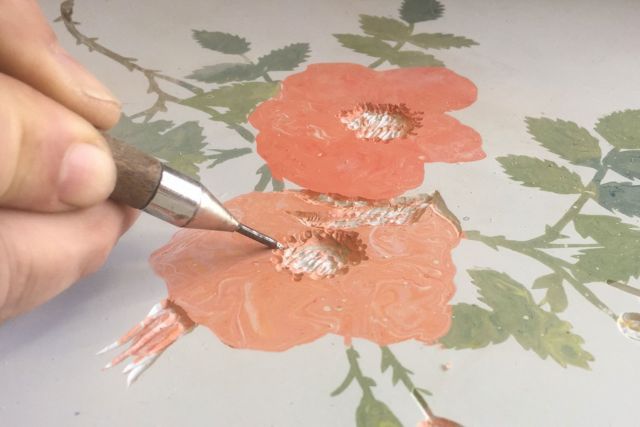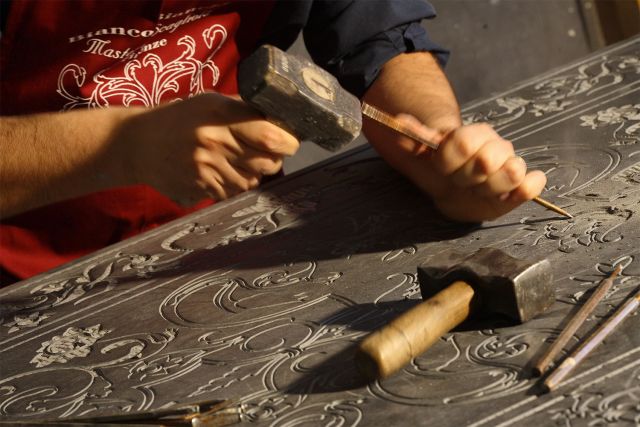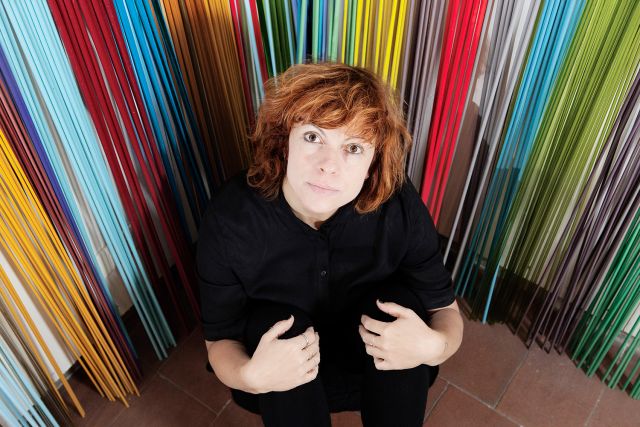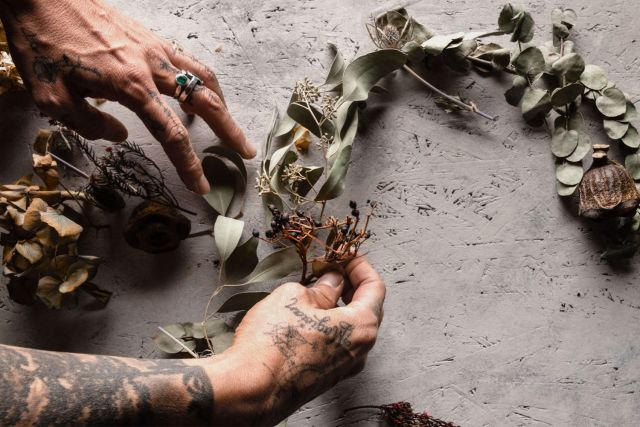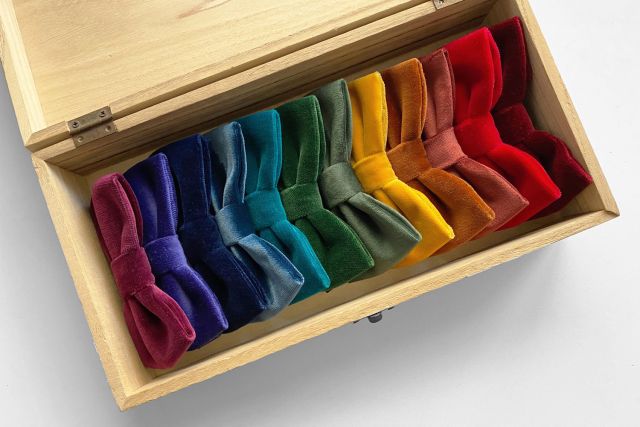This tabletop was commissioned and created following Prince and Princess Michael of Kent’s visit to the Bianco Bianchi workshop. Scagliola is a composite substance made from selenite, glue and natural pigments and used to imitate inlays in marble and semi-precious stones. The table, engraved with a family crest, is now part of the permanent collections in Kensington Palace, London.
Length 200 cm
Height 100 cm
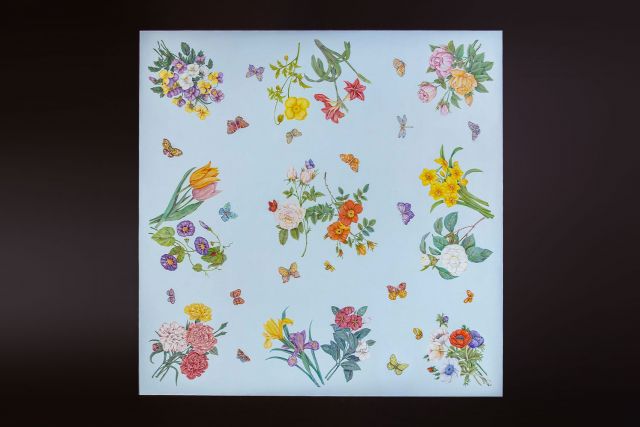
 Foto Carlo Carossio_1751898.jpg.jpeg)
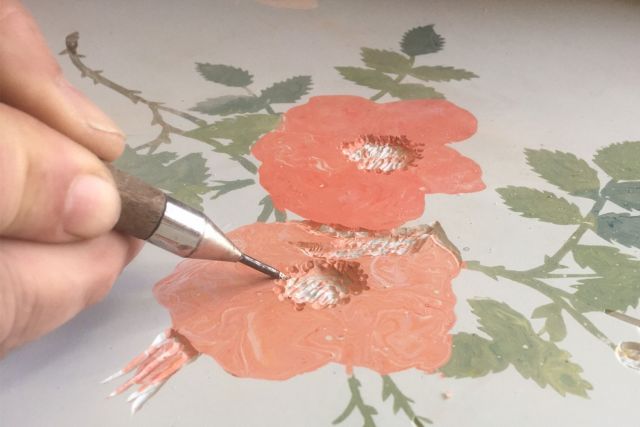
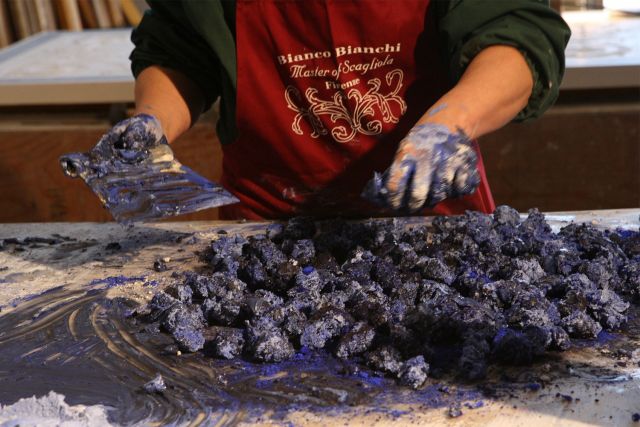
Elisabetta & Alessandro Bianchi
- Bianco Bianchi
- Scagliola maker
- Pontassieve, Italy
- Master Artisan
- Recommended by Fondazione Cologni Dei Mestieri D'Arte
Monday to Friday 09:00 - 14:30
+39 3393843048
A traditional Tuscan art revived
- • Elisabetta and Alessandro took over the workshop from their father
- • In 2016 they won the Maestro d'Arte e Mestiere (MAM) prize
- • Next to the workshop is a museum presenting the history of scagliola
Scagliola developed in the early 17th century as imitation marble for geometrical decorations in architectural works, before taking on more pictorial qualities. It was originally produced in the Tuscan-Emilian Apennines, which were naturally rich in selenite crystals, from which the plaster used in this technique was obtained. Thanks to the Medici family, scagliola became a successful artistic medium at the beginning of the 18th century, although the fashion died out fast: in the mid 19th century, workshops started to shut down and shops selling scagliola soon disappeared. Bianco Bianchi revived this tradition after World War II, and his children Elisabetta and Alessandro continue to practise this rare carft to the present day, now assisted by Alessandro’s son, Leonardo.
Read the full interviewWorks
Photo: © Laboratorio Bianco Bianchi

Photo: © Perissi
This tabletop, made using the scagliola technique, was inspired by Gucci’s famous Flora scarf print. Scagliola is a composite substance made from selenite, glue and natural pigments and used to imitate inlays in marble and semi-precious stones. The work was purchased by the Museum of Natural Science in Houston, Texas in 2018 and is displayed as a panel in its collection.
Length 140 cm
Width 140 cm

Photo: © Perissi
This blue scagliola tabletop was inspired by a scarf design from a Versace collection. Scagliola is a composite substance made from selenite, glue and natural pigments and used to imitate inlays in marble and semi-precious stones. The peculiarity of the richly inlaid work is the silver leaf detail in the design, making the surface bright and iridescent.
Diameter 139 cm

Photo: © Laboratorio Bianco Bianchi
The design of this scagliola tabletop was inspired by the decorative motifs on a table displayed in the Tribuna of the Uffizi Palace. Scagliola is a composite substance made from selenite, glue and natural pigments and used to imitate inlays in marble and semi-precious stones. The original table was made in the 17th century in the Grand Ducal workshops and is reinterpreted here with some additional details and colours.
Diameter 180 cm

Photo: © Zati
The panel of this gilded bronze box is decorated with a green and white scagliola inlay of lilies and leaves. Scagliola is a composite substance made from selenite, glue and natural pigments and used to imitate inlays in marble and semi-precious stones. The box is part of a Luxury Collection that includes other finely crafted boxes.
Length 27 cm
Height 19 cm
Depth 7 cm






